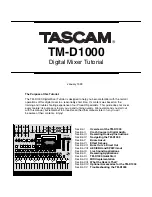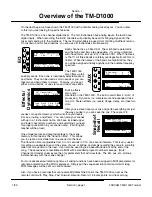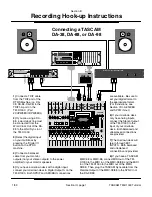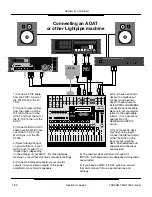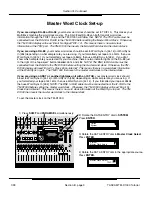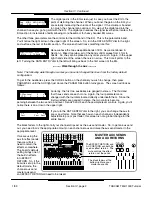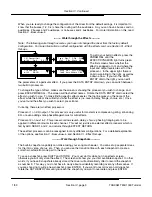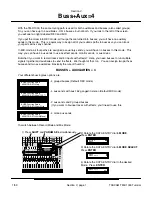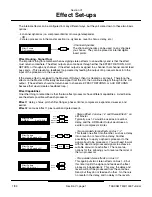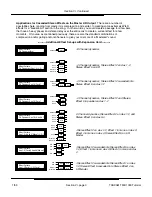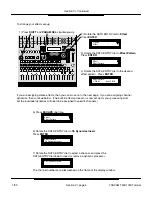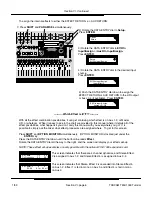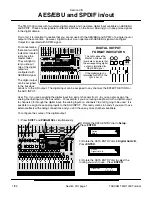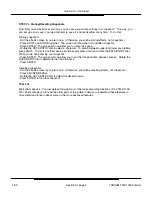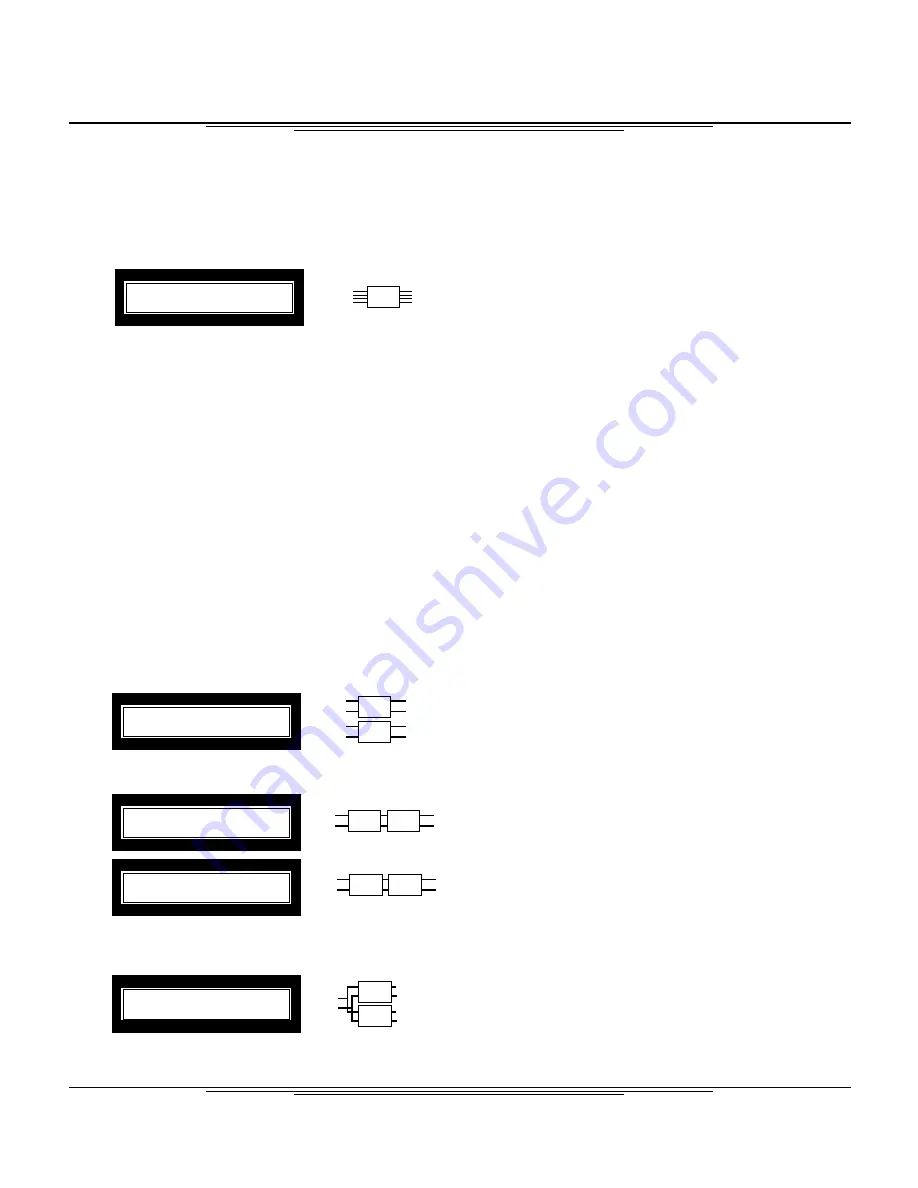
The internal effects can be configured in many different ways, but they all come down to these two basic
options:
- 4 channel dynamics (i.e. compressor/limiter or noise gate/expander
- OR -
- 2 stereo processors in the master section (i.e. dynamics, reverb, chorus, delay, etc.)
Effect Routing - Signal Flow
The important thing to remember when assigning stereo effects to an auxilliary send is that the effect
must return somewhere. The effect output can come back through either the EFFECT RETURN, AUX
RETURN, or through any channel. If the effect output is assigned to a channel, that channel cannot feed
aux sends. (This prevents a feedback loop created by feeding the output of a processor back into the
input of the processor via the aux send.)
If the stereo effect is assigned to the Master L/R Output, then it is treated as an insert. Therefore, the
effects on the Master L/R actually receive signal from the L/R, then continue straight through to the L/R
output. (These effects should not return back to channels, EFFECT RETURNS, or AUX RETURNS
because that would create a feedback loop.)
Effect Capabilities
One other thing to remember is that the two effect processors have different capabilities. Listed below
are the effects possible with each processor:
Effect 1
: delay, chorus, pitch shifter, flanger, phaser, limiter, compressor, expander, de-esser, and
exciter.
Effect 2
: same as Effect 1 plus reverb and gated reverb
4 Dyn
Channels
Effect Pattern
Ch Dynamics
?
Aux 1
Aux 2
Master L
Master R
Eff2
Eff1
Effect Pattern
L-R:Eff1
?
Aux1-2:Eff2
Aux 1
Aux 2
Eff2
Eff1
Effect Pattern
Aux1-2:Eff [ Para ]
?
Eff1
Eff2
Aux 1
Aux 2
Effect Pattern
Aux1-2:Eff[Cascade1-2]
?
Eff2
Eff1
Aux 1
Aux 2
Effect Pattern
Aux1-2:Eff[Cascade2-1]
?
-
Channel dynamics
The channel dynamics can be used on any channels
you choose. They can be placed at internal digital
insert points.
-
Stereo Effect 2 on Aux 1-2 and Stereo Effect 1 on
L/R Master
Typically, aux 1-2 would be used as a reverb or
delay, and the L/R Master Output would use an
exciter or compressor limiter.
-
Two cascaded stereo effects on Aux 1-2
This feeds one effect into the other, such as a delay
into a reverb, or chorus into a delay. Another
possibility is to apply a dynamic processor to the
signal about to be processed. You will need to work
with the direct and processed signals to achieve a
suitable amount of each effect. There are two
options for this, allowing you to reverse the order of
the two processors.
-
Two parallel stereo effects on Aux 1-2
This again puts two stereo effects on Aux 1-2, but
this time it splits the signal, and feeds each effect
processor independently. This way, the delay and
reverb will both be processed from the same Aux
Send, but they do not feed each other. So, there is
no reverb in the delay, and no delay in the reverb.
Section VI
Effect Set-ups
Section VI, page 1
TASCAM TM-D1000 Tutorial
1/99

